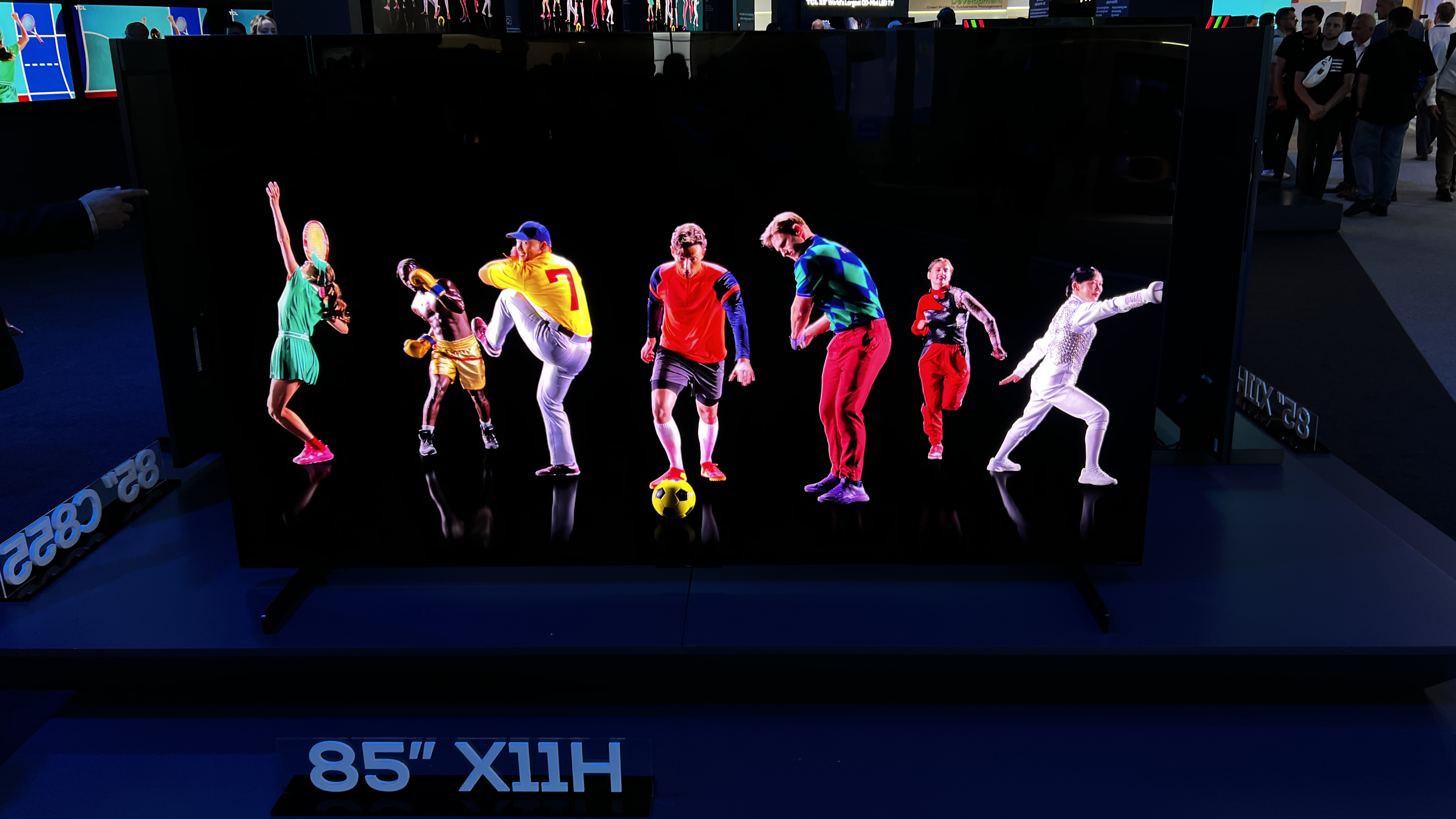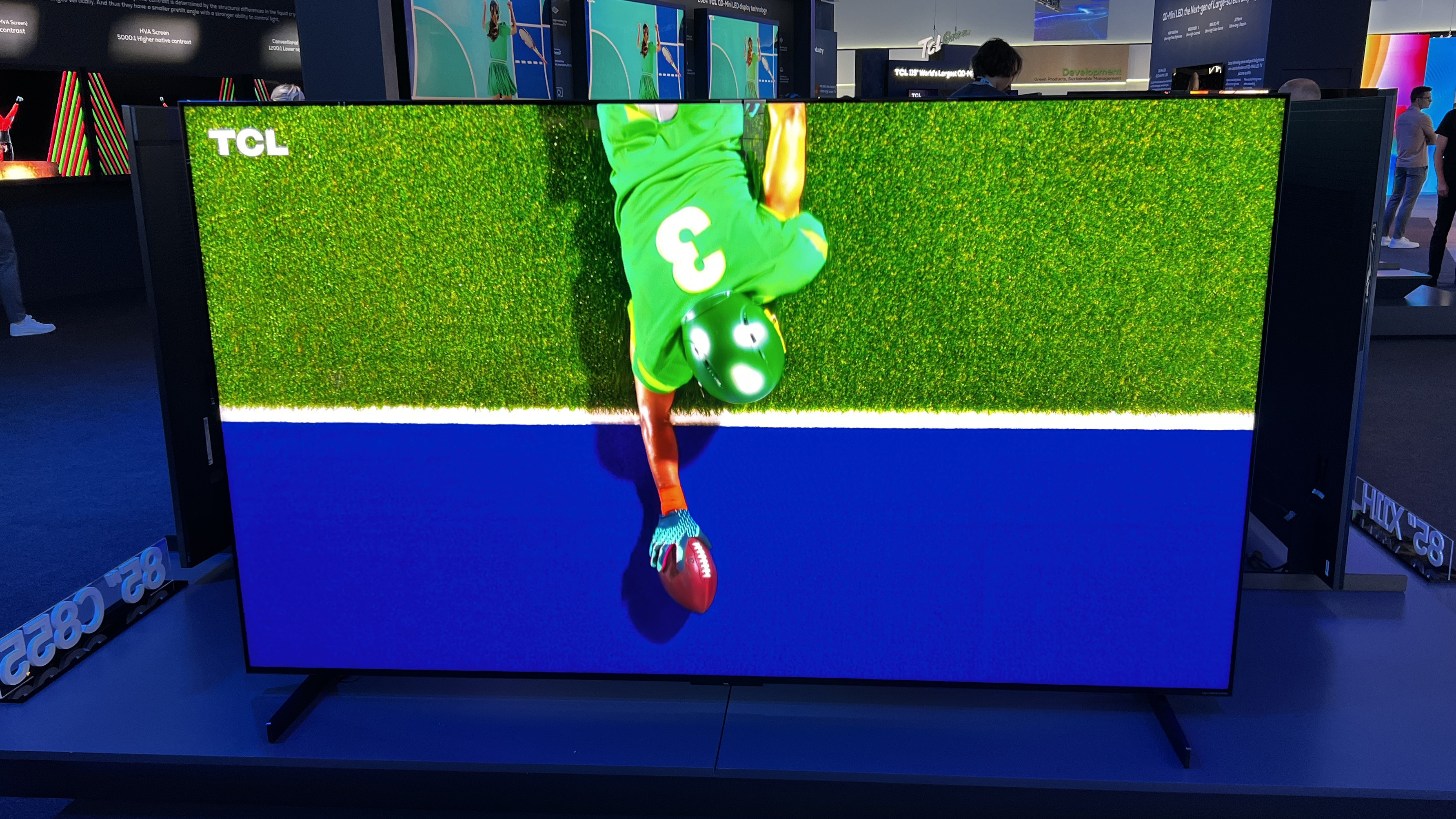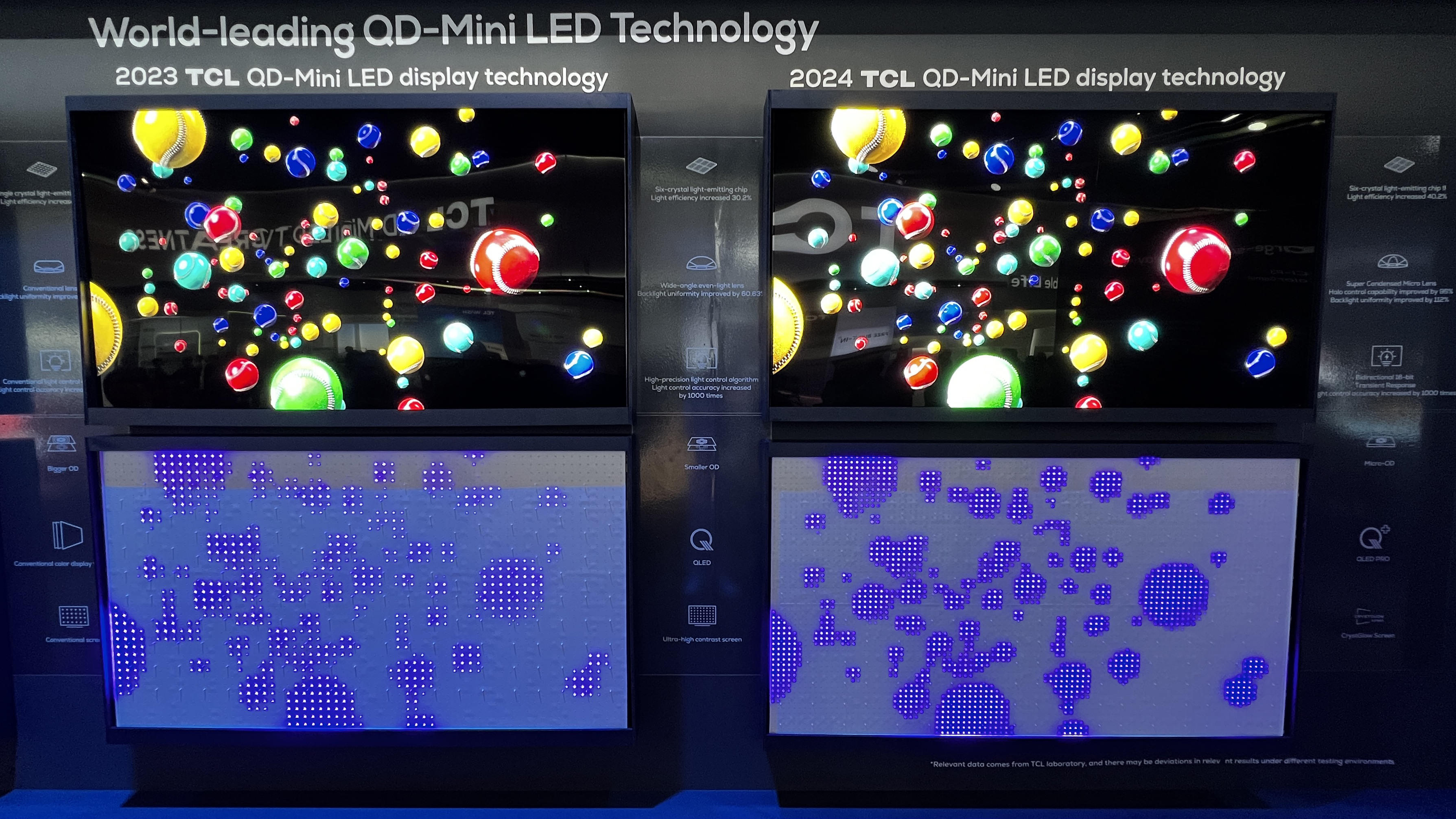A few months back, TCL announced the details of its next flagship mini-LED TV – and I've just had the first chance to see it in action at the IFA 2024 show, and it really is a stunner.
It's available in 85-inch and 98-inch sizes, and both were on display. Even without worrying about the price (which I have to assume will be high) it's clear that I won't be getting either of these giant TVs to fit in my modest living room, but it makes me excited to see the tech inside them coming to TCL's regular TV range… though also proved to be a reminder of just how good the company's current TVs are.
The X11H is capable of 6,500 nits of brightness according to TCL, and bear in mind that around 3,000 nits is most you get from the more standard-priced mini-LED TVs that appear in our guide to the best TVs – and that's still for the more premium ones.
Super-high brightness isn't really a benefit if all the light is leaking from bright areas into dark areas, so the X11H has over 10,000 dimming zones in the 85-inch model, and over 14,000 in the 98-inch model.
Seeing this combination of brightness and light control in action is pretty mesmerizing. Colors are so intense without falling over the line to over-saturation, and the the dark parts of the screen were inky black with no obvious bleeding from the light areas at all.

Now, a trade show floor isn't the best place to get a look at the nuances of light control, I readily admit, so I'd love to get the TV in our dark testing room, but I was still impressed at the level of contrast I saw there, because TCL's demo footage wasn't afraid to lean into having small bold areas surrounding by darkness.
Still, I kind of assumed the level of contrast would be good, so the colors were the element that really jumped out at me. The thing about ultra-bright TVs isn't that they don't necessarily make HDR movies any better – in fact, with these very bright TVs, we always recommend using Movie or Filmmaker modes that usually drop the brightness, because it tends to help with accuracy.
But big brightness and big colors are fantastic for recreating the real world, which is a very bright place. It's fantastic watching sports matches or nature documentaries filmed in ultra-detailed 4K on a screen with brightness that makes them look closer to real life – the advantage of the brightness is the flexibility, rather than wanting everything to be bright by default.

However, I mentioned before that something I picked up on is the comparison to TCL highest-end TV for regular people in Europe this year: the TCL C855. I could see the X11H and the C855 right next to each other at 85 inches, and while that comparison showed what the extra tech of the X11H can do, what I took away even more strongly is just how good the C855 is – not a surprise if you've read our glowing TCL C855 review.
(Being a European trade show, the US-focused TCL QM851G wasn't on show to compare with.)
The 85-inch C855's handling of local dimming didn't seem meaningfully different from the X11H's – the C855 does still have over 2,000 dimming zones, after all.

I could see a much clearer jump in color strength on the X11H from the C855, thanks largely to the extra brightness most likely, but even then it kind of served as a reminder that the C855 still looked fantastic and is likely to be a fraction of the price of the X11H – especially since the C855 will drop in price over time, and the X11H won't arrive until later. Plus… well, the C855 is available in more realistic sizes for most people.
As with most high-end AV tech, there's definitely a case of diminishing returns as you spend more and more, but the X11H still made a really strong case for what you get from taking TV tech to the extreme.
We gave the TCL X11H one of our Best of IFA 2024 awards, thanks to this beautiful demonstration of color and contrast – take a look at our other favorite tech from the show too.
from TechRadar - All the latest technology news https://ift.tt/7uAdxZE

0 coment�rios: